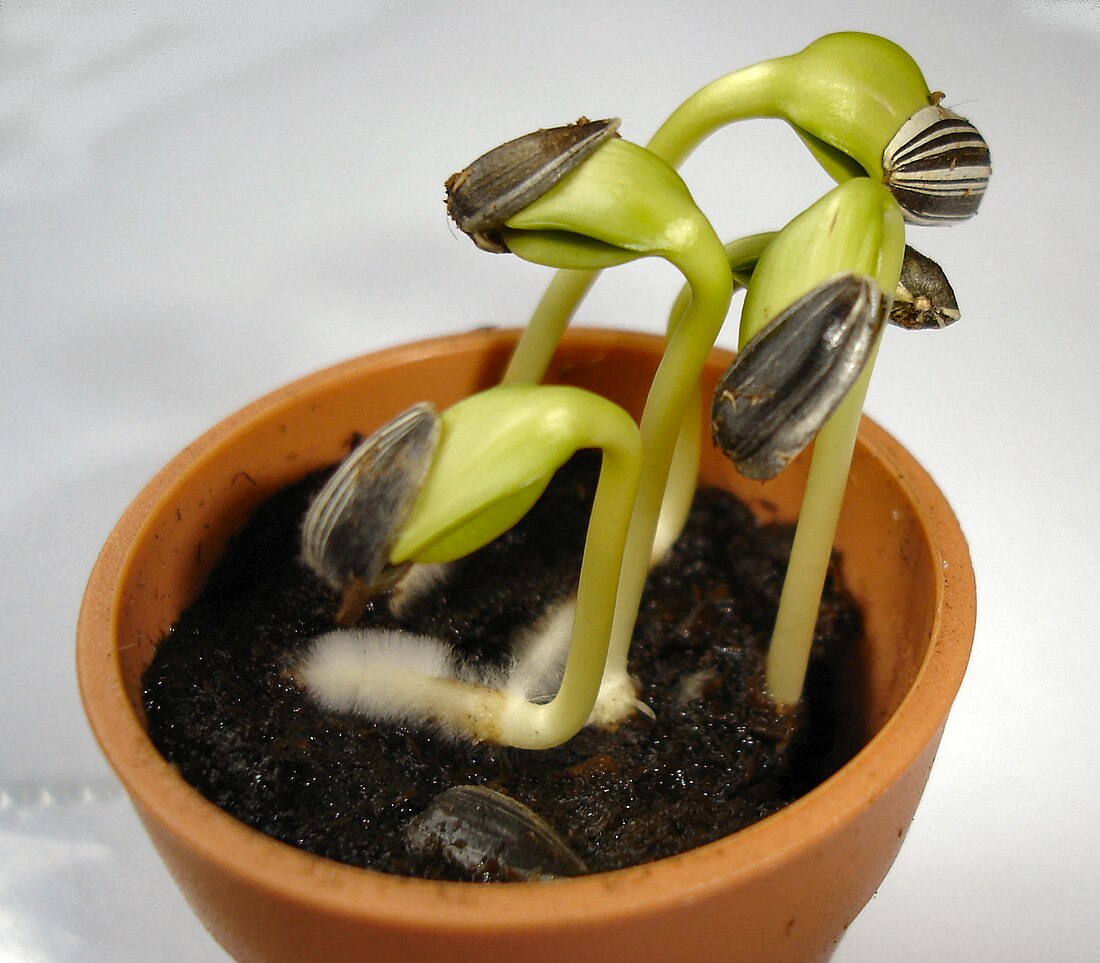Germination occurs when a spore or seed starts to grow. It is a term used in botany. When a spore or seed germinates, it produces a shoot or seedling, or (in the case of fungi) a hypha. The biology of spores is different from seeds.

A spore germinates if and when conditions are right. It has a very limited lifespan. The method of spore-bearers, which are lower plants such as mosses, ferns and also fungi, is to produce vast numbers of spores, of which only a small percentage germinate.
Seeds contain an embryo, a store of food (the endosperm), and a protective coat. Seed plants include Gymnosperms (such as conifers) and Angiosperms (such as flowering plants). Seeds can survive much longer than spores, sometimes for hundreds of years. The strategy of seed-bearing plants is to invest energy and material in the substance of seeds, and they have evolved more sophisticated methods of dispersal than just wind.[1]p98
Seeds do not germinate until their requirements are met, and these needs differ from species to species.[2]
- The dormancy period must be over. Dormancy is governed by changes inside the seed. Each species has its own dormancy period, and will not germinate until that period is over.
- Their hibernation must be over. The hibernation is ended when events in the environment trigger germination. Sometimes this is just temperature and water, sometimes fire, sometimes the seed must go through a long cold spell.
The requirements for fruits is the same as for seeds. A fruit is just a seed with one or more extra layers derived from parts of the flower.
References
Wikiwand in your browser!
Seamless Wikipedia browsing. On steroids.
Every time you click a link to Wikipedia, Wiktionary or Wikiquote in your browser's search results, it will show the modern Wikiwand interface.
Wikiwand extension is a five stars, simple, with minimum permission required to keep your browsing private, safe and transparent.
